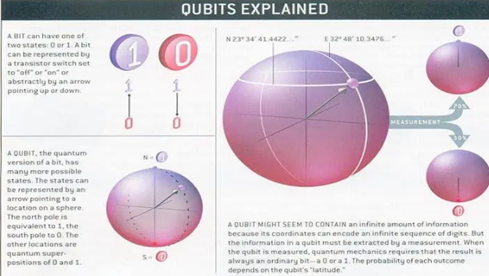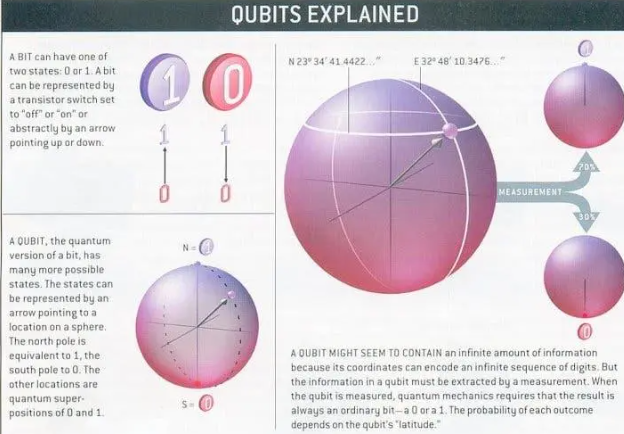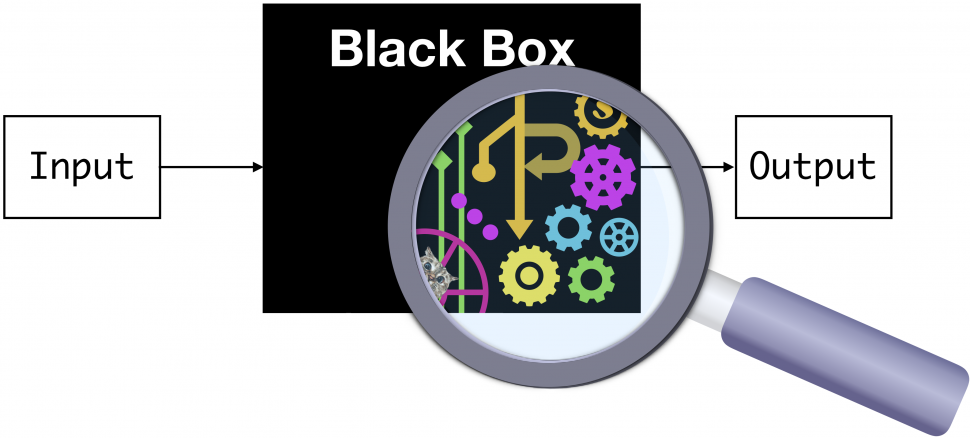- Courses
- GS Full Course 1 Year
- GS Full Course 2 Year
- GS Full Course 3 Year
- GS Full Course Till Selection
- Answer Alpha: Mains 2025 Mentorship
- MEP (Mains Enrichment Programme) Data, Facts
- Essay Target – 150+ Marks
- Online Program
- GS Recorded Course
- Polity
- Geography
- Economy
- Ancient, Medieval and Art & Culture AMAC
- Modern India, Post Independence & World History
- Environment
- Governance
- Science & Technology
- International Relations and Internal Security
- Disaster Management
- Ethics
- NCERT Current Affairs
- Indian Society and Social Issue
- NCERT- Science and Technology
- NCERT - Geography
- NCERT - Ancient History
- NCERT- World History
- NCERT Modern History
- CSAT
- 5 LAYERED ARJUNA Mentorship
- Public Administration Optional
- ABOUT US
- OUR TOPPERS
- TEST SERIES
- FREE STUDY MATERIAL
- VIDEOS
- CONTACT US
NEW QUBIT CIRCUITS
NEW QUBIT CIRCUITS
28-09-2023

Latest Context
Recently, a new qubit circuit enables quantum operations with higher accuracy.
About the New Qubit Circiut
- To solve the quantum error, scientists developed a special coupling element between two fluxonium qubits.
- Fluxonium is a relatively new type of superconducting qubit.
- Compared to more widely utilised superconducting qubits, it has the potential to have a substantially longer lifespan.
- Their design blocks undesirable background interactions that could erroneously affect quantum operations.
- Quantum computers of today lack the stability required to implement such error correction at scales that are useful for business.
Quantum Supremacy (QS)
- When a quantum computer outperforms a classical supercomputer on a well-defined computer science problem, this achievement is known as quantum supremacy.
- Qubits are able to carry more information in superposition states.
- A quantum computer can imitate many classical computers operating simultaneously due to quantum superposition.
- Quantum computers have an advantage over classical computers in that they can conduct a disproportionately higher number of operations thanks to their ability to do multiple computations in parallel.
- Sycamore, the name of Google's quantum computer, was said to have achieved "supremacy" by completing a task that would have taken a supercomputer 10,000 years to complete in 200 seconds.
Supercomputer
- Supercomputer is a class of extremely powerful computers. The term is frequently used to refer to the fastest high-performance systems at any given period.
- Instead of million instructions per second (MIPS), the performance of a supercomputer is frequently expressed in floating-point operations per second (FLOPS).
- Supercomputers that can perform above 1017 FLOPS (a hundred quadrillion FLOPS, 100 petaFLOPS, or 100 PFLOPS) have been around since 2017.
- These are highly sizable classical computers, often with hundreds of cores of classical CPU and GPU powering advanced artificial intelligence and very sizable calculations.
Need of Quantum Computers
- Even supercomputers are binary code-based devices dependent on transistor technology from the 20th century. They have trouble resolving particular issues.
- When traditional computers malfunction, it's frequently because of complex problems, which are issues where numerous variables interact in intricate ways.
- On whatever scale, there are some complicated issues that we are unable to handle with conventional computers.
- Quantum physics governs how things work in reality. Our best tools for comprehending it should often be computers that do calculations utilising the quantum states of quantum bits.
Quantum Computing
- A quantum computer is a computer that takes advantage of quantum mechanical phenomena.
- Quantum computers are devices that store data and carry out calculations using the principles of quantum physics.
- This can be quite helpful for some tasks because they might accomplish them far better than our greatest supercomputers.
- Information is stored on traditional computers, such as laptops and smartphones, in binary "bits" that can either be 0s or 1s.
- The fundamental memory component of a quantum computer is a quantum bit, or qubit.
- New discoveries in healthcare, energy, environmental systems, smart materials, and other fields are being sparked by quantum computing.
Qubit
- Just like a binary bit is the basic unit of information in classical computing, a qubit is the basic unit of information in quantum computing.

Qubits vs Bits
- Qubits are represented by a superposition of multiple possible states.
- A qubit combines two states linearly using the superposition phenomenon in quantum mechanics.
- A traditional binary bit can only represent one binary value, such as 0 or 1, and can therefore only exist in one of two states.
- However, a qubit can represent either a 0 or a 1, or any ratio of 0 to 1 in the superposition of both states, with a predetermined likelihood of being a 0 and a predetermined probability of being a 1.
Entanglement
- Quantum entanglement may exhibit in multiple qubits.
- A single system is formed by entangled qubits that always correlate with one another.
- It is possible to determine the state of the other qubits without actually measuring it, even when they are infinitely far apart.
- Any quantum computation needs entanglement, and a classical computer is incapable of performing it effectively.
- Large-number factoring using the Shor algorithm and search-problem resolution using the Grover method are two examples of applications.
Superposition
- Superposition is a phenomenon in quantum computing that allows quantum objects to simultaneously exist in more than one state or location.
- This implies that an object can exist in two states simultaneously and still be a single object.
- Qubit entanglement and superposition probabilities are used by quantum computers to carry out operations.
- The quantum computer's qubits can do many operations at once thanks to superposition, which makes them quicker than traditional computers.
Initiative taken by Indian Government towards Quantum Computing
- Quantum Computer Simulator (QSim): the Ministry of Electronics and Information Technology (MeitY) released the Quantum Computer Simulator (QSim) Toolkit with the goal of doing quantum computing research in a practical and affordable way.
- National Mission for Quantum Technology and Applications (NM-QTA): The mission intends to concentrate on fundamental science, translation, technological development, human and infrastructural resource generation, innovation, and start-ups to address issues of national concern.
- Quantum Communication Lab (QCL) by the Centre for Development of Telematics (C-DOT): QCL is a Quantum Key Distribution (QKD) system developed locally by C-DOT that supports a distance of more than 100 kilometres over regular optical fibre.
Challenges with Initiatives taken by the government
- Gaps in policy: India's loosely constructed quantum ecosystem lacks clearly defined benchmarks to evaluate the results of its quantum endeavours. For instance, the absence of policies with clear objectives.
- Raising Funds: Due to low venture capital investment, Indian quantum computing businesses struggle to raise money for product development and scaling. For instance, the budgeted R&D expenditure is under 1%.
- Lack of talent: Compared to China or the US, India has a smaller pool of academics, businesspeople, and industry professionals. Think of the brain drain issue or the poor infrastructure and research facilities.
- Poor infrastructure: India struggles to manufacture hardware and still imports essential quantum components. Additionally, there are not enough semiconductor chips, computers, fabrication laboratories, or superconducting materials in India.
Way Forward
- To transition from being an importer of quantum technology to an exporter, revise the objectives, structures, and deliverables of Indian technology policy.
- fostering innovation, entrepreneurship, university courses, and quantum technology training programmes to develop the knowledge ecosystem.
- Create metrics to evaluate the strategy's and the action plan's short- and long-term success.
- a mechanism for tracking the development of efforts in quantum-enabled science and technology.
- a push for the semiconductor industry as well as an expansion of the investor ecosystem to increase the manufacture of the quantum computer's hardware components.



